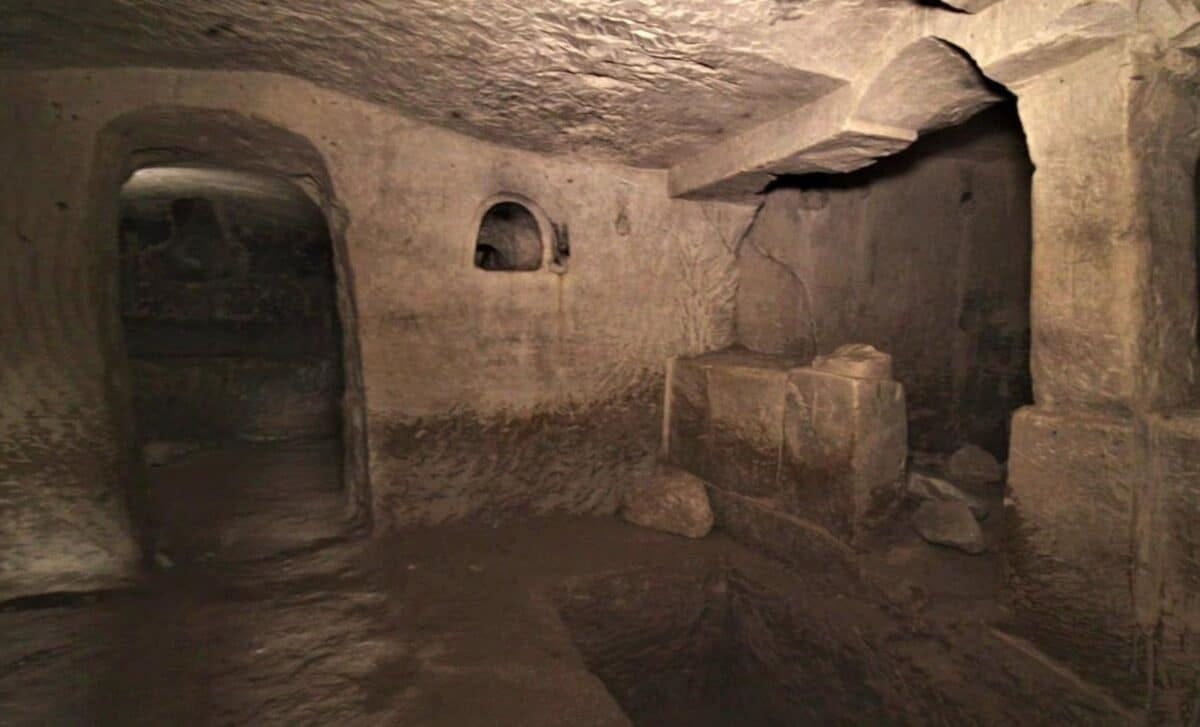Originally believed to be a Saint’s tomb, archaeologists now find a royal burial lost to time
Latest News
Reported by the Daily Galaxy:
A cave tomb in central Israel, long believed to be the burial site of Jesus’ midwife, may instead hold the remains of Salome, the sister of Herod the Great. This unexpected interpretation comes from a new archaeological study that reexamines the site’s architecture and artifacts.
The site was once a popular Christian pilgrimage destination during Byzantine times, especially from the fourth through the ninth centuries. Pilgrims were drawn to the location by a local belief that the cave belonged to Salome, the woman traditionally identified in early Christian tradition as a midwife present at the birth of Jesus. This connection was largely inspired by the discovery of an ossuary bearing the name Salome — a common name in that era.
However, a new interpretation proposes a more regal connection. According to Vladik Lifshits, an archaeologist with the Israel Antiquities Authority (IAA), the site’s monumental features suggest the burial of someone far more prominent than previously thought.
“It’s not that I think it must be the tomb of Salome, the sister of Herod,” he clarified. “I’m suggesting that this is one of the possibilities.” The cave’s architectural elements include a large entrance courtyard and other signs of monumental construction. Such features, according to Lifshits and co-author Nir-Shimshon Paran, indicate a burial intended for someone within the elite social strata of first-century B.C. Judaea, which was at the time a client state under Roman influence.
The new hypothesis centers on Salome, Herod the Great’s sister — a well-documented figure in Judean history. Herod, who ruled from about 37 to 4 B.C., is remembered both for his grand architectural projects, such as the restoration of the Second Temple, and for his brutal biblical reputation, including the infamous Slaughter of the Innocents. His sister Salome played a significant role in his court and is known to have been involved in the internal power struggles of the Herodian dynasty.
Another woman named Salome, Herod’s granddaughter, is also a potential candidate. She is notorious in Christian texts for her role in the beheading of John the Baptist, reportedly demanding his head on a platter. While both figures were part of the Herodian royal family, scholars lean toward Herod’s sister as the more plausible occupant due to the timing of the tomb’s construction and associated architecture.
Read more here.




I wonder how many historical sites we have been wrongly informed about. When I visited the ruins of Cappernium by the Sea of Galilee, there was one building that had clearly been much larger than the rest. I was told that it had been Peter's home. As a result, a church had been built there. But it seemed strange to me that a poor fisherman would have had the largest home is Cappernium. 🤔